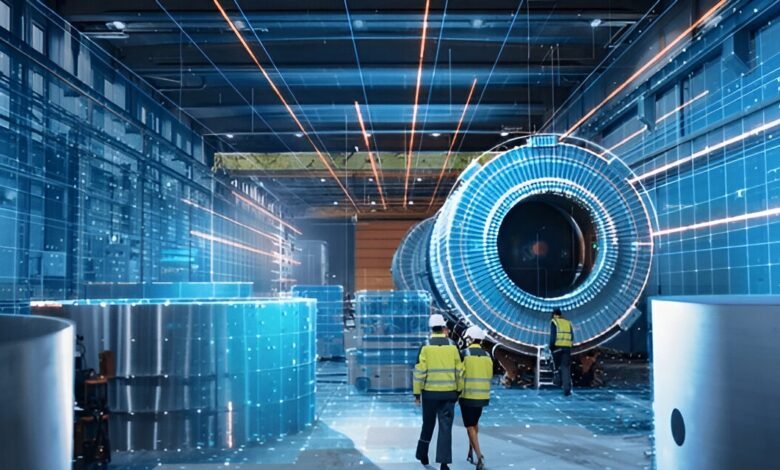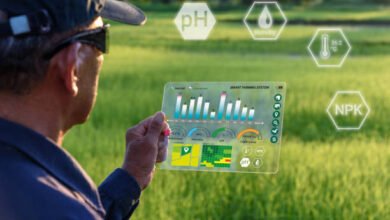Industrial IoT (IIoT) and Its Impact on German Manufacturing

The Industrial Internet of Things (IIoT) is a transformative force in modern manufacturing, and Germany—home to Industry 4.0—is leading this digital revolution. By embedding smart sensors, automation, and data-driven decision-making into industrial processes, IIoT is enhancing productivity, reducing operational costs, and enabling smarter factories.
Germany’s manufacturing sector, renowned for its precision engineering, automotive excellence, and industrial machinery, is leveraging IIoT to maintain its global leadership. This article provides an in-depth exploration of how IIoT is reshaping German manufacturing, covering its key applications, benefits, challenges, and future trends.
What Is Industrial IoT (IIoT)?
Industrial IoT (IIoT) is a specialized branch of the Internet of Things (IoT) that focuses on industrial applications. It connects machines, sensors, and software to collect, analyze, and act on real-time data, optimizing manufacturing efficiency and performance.
Core Components of IIoT
- Smart Sensors & Actuators—These devices monitor parameters like temperature, vibration, and pressure, feeding data into control systems.
- Cloud Computing & Big Data Analytics—IIoT relies on cloud platforms (e.g., Siemens MindSphere, Bosch IoT Suite) to store and analyze massive datasets.
- Artificial Intelligence (AI) & Machine Learning (AI-driven algorithms predict equipment failures and optimize production schedules.
- Edge Computing—Instead of sending all data to the cloud, edge devices process information locally, reducing latency.
- Cybersecurity Protocols—Given the risk of cyber threats, IIoT systems incorporate encryption and secure authentication.
IIoT vs. Traditional Automation
Unlike traditional automation, which operates in silos, IIoT enables interconnected, intelligent systems that communicate and adapt in real time. For example:
- A traditional factory might use programmable logic controllers (PLCs) for fixed automation.
- An IIoT-enabled factory uses self-learning machines that adjust workflows based on real-time demand.
The Role of IIoT in German Manufacturing
Germany’s manufacturing sector is the backbone of its economy, contributing 23% of GDP and employing over 7 million people. IIoT is a key enabler of Industry 4.0, Germany’s strategic initiative to digitize manufacturing.
1. Smart Factories & Digital Twins
- Smart factories use IIoT to create fully automated, self-optimizing production lines.
- Digital twins (virtual replicas of physical machines) allow manufacturers to simulate and optimize processes before implementation.
- Example: Siemens’ Amberg Electronics Plant uses digital twins to achieve 99.9988% quality accuracy.
2. Predictive Maintenance
- IIoT sensors monitor equipment health, predicting failures before they occur.
- German manufacturers save €50 billion annually by reducing unplanned downtime.
- Example: BMW uses AI-driven vibration sensors to prevent conveyor belt breakdowns.
3. Supply Chain & Logistics Optimization
- Real-time tracking of raw materials and finished goods improves supply chain transparency.
- Autonomous guided vehicles (AGVs) and RFID tags streamline warehouse operations.
- Example: DHL’s Smart Warehouse in Germany uses IIoT-powered robots for 30% faster order fulfillment.
4. Energy Efficiency & Sustainability
- IIoT-enabled energy management reduces power consumption in factories.
- Germany’s push for carbon neutrality by 2045 relies on smart grids and IIoT analytics.
- Example: BASF’s Ludwigshafen plant cut CO₂ emissions by 25% using IIoT sensors.
Key Benefits of IIoT in German Manufacturing
1. Increased Productivity & Cost Reduction
- Automated workflows reduce human errors and speed up production.
- SAP’s IIoT solutions help manufacturers achieve 20% higher output with the same resources.
2. Enhanced Quality Control
- AI-powered vision systems detect defects with 99.9% accuracy.
- Volkswagen uses IIoT cameras to inspect car paint quality in real time.
3. Workforce Augmentation (Not Replacement)
- Augmented reality (AR) glasses assist technicians in machine repairs.
- Bosch’s AI-assisted assembly lines guide workers with real-time instructions.
4. Improved Safety & Compliance
- Wearable IIoT devices monitor worker health (e.g., fatigue, heat stress).
- Compliance with German safety regulations (DGUV) is automated through IIoT reporting.
Challenges of Implementing IIoT in Germany
1. High Initial Investment
- Retrofitting legacy machines with IIoT sensors is expensive.
- Solution: Government grants (e.g., the ZIM funding program) support SMEs in adopting IIoT.
2. Cybersecurity Risks
- Connected factories face threats like ransomware and data breaches.
- Solution: BSI (Federal Office for Information Security) enforces strict IIoT cybersecurity standards.
3. Integration with Older Systems
- Many German factories still use 20-year-old CNC machines.
- Solution: Middleware solutions (e.g., OPC UA) bridge old and new systems.
4. Skills Shortage
- Demand for IIoT engineers, data scientists, and AI specialists outstrips supply.
- Solution: Dual education programs (vocational training + university courses).
Future Trends of IIoT in German Manufacturing
1. 5G & Ultra-Fast Connectivity
- 5G-enabled factories (e.g., Audi’s 5G Smart Factory) support real-time IIoT applications.
2. AI-Driven Autonomous Factories
- Self-learning robots (e.g., KUKA’s IIoT robots) will dominate future production floors.
3. Blockchain for Secure IIoT Data
- Fraunhofer Institute is testing blockchain-based IIoT security for supply chains.
4. Sustainable & Circular Manufacturing
- IIoT will optimize recycling (e.g., Siemens’ closed-loop production systems).
Conclusion
Industrial IoT (IIoT) is revolutionizing German manufacturing by enhancing efficiency, reducing costs, and enabling sustainable growth. While challenges like cybersecurity, high costs, and legacy systems persist, advancements in 5G, AI, and blockchain will drive future innovation.
As Germany continues to pioneer Industry 4.0, IIoT will remain a cornerstone of smart manufacturing, ensuring the country’s industrial dominance for decades to come.











